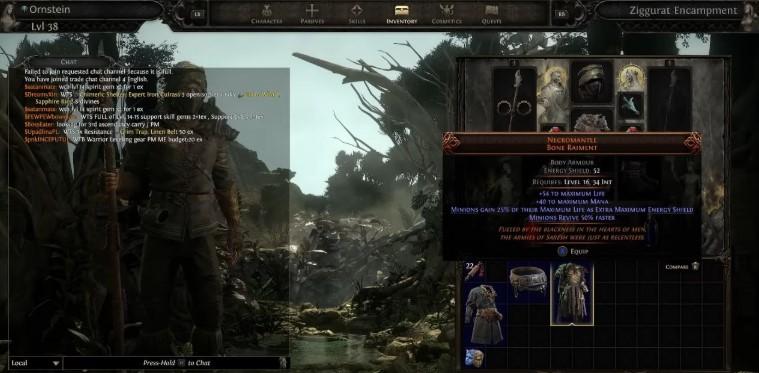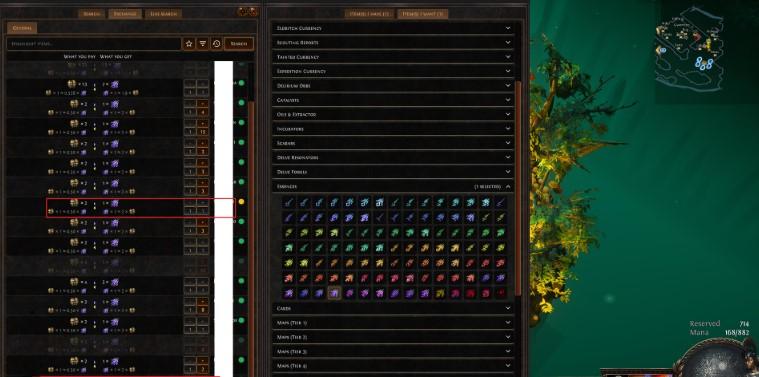Path of Exile 2 is more than just a reboot or sequel—it’s a fresh, ambitious take on what makes action RPGs tick. While the new seven-act campaign promises a smoother, more immersive journey through Wraeclast, many players—especially longtime fans—have just one question in mind: What does the endgame look like?
After all, in ARPGs like path of exile 2 trade, the real game doesn’t begin until after the final boss is down. That’s where theorycrafted builds are tested, elite bosses emerge, and loot hunters begin their endless pursuit of god-tier gear.
The good news? Path of Exile 2 is not just keeping the endgame alive—it’s expanding and refining it in significant ways. Whether you’re new to the franchise or a veteran mapping machine, here’s everything we know so far about the endgame of Path of Exile 2 and how it builds upon the deep systems of the original.
The Atlas of Worlds Returns
At the heart of Path of Exile’s endgame is the Atlas of Worlds—a sprawling map system that lets players run procedurally generated, highly customizable maps, each with unique bosses, mods, rewards, and risks. This system has been a pillar of PoE’s replayability, and it’s coming back in Path of Exile 2—only this time, it’s more refined and integrated.
The Atlas system in PoE 2 will serve as the core of the endgame once again. Players will collect map items, open portals to different zones, and face off against a variety of foes, culminating in high-stakes encounters with pinnacle bosses.
But GGG has confirmed the Atlas will be reworked—likely with new progression paths, regional modifiers, and mapping objectives. Expect new layers of strategic planning, new influence systems, and possibly a more intuitive UI to better guide players through the expanding world.
A Unified Endgame for Both Campaigns
One of PoE 2’s most exciting design choices is the dual campaign system. Players can start a new character in either the original Path of Exile campaign or the new seven-act sequel campaign—but both routes converge into the same shared endgame.
This solves a major concern with sequels potentially splitting the player base or invalidating old content. In PoE 2, your journey might differ in the beginning, but everyone arrives at the same destination: the Atlas.
This unified endgame design ensures:
A thriving economy across both campaigns
Community events and leagues remain centralized
Your characters and gear are always relevant, no matter which storyline you chose
New Endgame Bosses and Encounters
In the original PoE, pinnacle bosses like the Elder, Shaper, Maven, and Uber Elder became iconic challenges, requiring top-tier builds and high mechanical skill. These fights combined bullet-hell patterns, movement skill checks, and massive AoE attacks into thrilling encounters.
Path of Exile 2 will not only bring back many of these challenges but introduce new endgame bosses that reflect the increased mechanical depth of the sequel.
Early footage and developer interviews suggest that boss fights in PoE 2 are:
More telegraphed, allowing players to react skillfully instead of relying on flasks
Multi-phase, with changing environments and enemy behavior
Build-sensitive, encouraging diverse builds to overcome different mechanics
Expect to see brand-new boss arenas, elemental-themed battles, and possible “raid-like” team challenges for group play.
Endgame Progression and Modifiers
The beauty of Path of Exile’s endgame lies in its infinite variety. Maps can be modified with orbs, crafted for specific outcomes, or influenced by Elder and Shaper forces. In PoE 2, these systems are being revisited and upgraded.
Here’s what we expect based on what GGG has revealed:
Map Crafting Rework: Less cluttered UI, better descriptions of mods, and potentially a streamlined crafting system that doesn’t require external tools.
New Influence Mechanics: Systems like Conquerors of the Atlas and Maven’s Invitations could return with new lore-aligned factions in PoE 2.
Increased Build Diversity in Map Modifiers: Instead of punishing certain playstyles, mods may encourage switching gear/skills depending on content type.
You’ll still be able to customize your farming strategy—whether that’s running ultra-juiced maps for currency, hunting bosses for unique loot, or pushing Delirium, Breach, or other legacy mechanics to their limits.
Endgame Systems From Leagues Will Return
Over the years, PoE has introduced powerful and popular league mechanics like:
Delve (infinite dungeon)
Heist (rogue-led missions for special loot)
Blight (tower defense-style encounters)
Ritual, Harvest, Expedition, and more
These leagues didn’t just disappear—they were folded into the core game. In Path of Exile 2, many of these will return in new forms, rebalanced for the new mechanics, pacing, and visuals of the sequel.
Expect:
Updated UI for Heist planning and Delve navigation
Better scaling of older content with current power levels
Enhanced reward systems to make time investment more worthwhile
GGG has even teased new endgame-exclusive content for PoE 2, meaning there may be new “evergreen” league-style systems introduced post-launch.
League Integration and Seasonal Content
Just like PoE1, Path of Exile 2 will operate on a three-month league cycle. Each new league introduces a fresh mechanic, story twist, and challenge rewards, allowing players to start over on a clean slate.
But PoE 2's leagues will have:
Tighter integration with the main game
Improved early-game pacing
More refined league mechanics from day one
Seasonal resets ensure a level playing field for all players and introduce compelling new endgame goals. It’s a system that keeps the game feeling fresh—even years after launch.
New Gear, Mods, and Loot Philosophy
Loot in Path of Exile 2 is receiving a major overhaul. One of the biggest complaints in PoE1 was “loot bloat”—too many worthless rares, too many mods to parse quickly, and too much screen clutter.
In the sequel, GGG is aiming to:
Reduce cluttered drops
Improve mod readability (simpler language, better color-coding)
Introduce meaningful gear upgrades even at high levels
Provide more deterministic crafting options, perhaps through refined Harvest or new crafting benches
This all ties into the endgame, where players hunt for perfect items to complete builds or push ladder rankings.
Multiplayer and Group Endgame Content
GGG has stated that multiplayer is getting more attention in PoE 2, and that includes endgame content. While the game remains solo-friendly, party play will feel more rewarding, with better loot scaling, XP sharing, and build synergy.
Possible multiplayer endgame features:
Group boss fights requiring coordination
Shared maps with unique co-op mechanics
Party-specific content rewards or drops
Whether you run with a guild, a duo partner, or solo, PoE 2 is offering more reasons to engage with the broader community.
A True Test of Build Crafting
The endgame of PoE 2, like its predecessor, will be the ultimate testbed for your build ideas. Whether you’re theorycrafting a crit-based warcry ranger or a tanky poison totem marauder, the Atlas is where your choices come to life.
This is where:
You perfect your passive tree
You min-max your ascendancy points
You chase perfect affixes and corruptions
You take down bosses with unique mechanics and meaningful loot
GGG knows this is where the game lives and dies—and they’re building PoE 2’s endgame to be a challenge that continues to evolve over time.
Conclusion: A Familiar but Evolved Endgame
The endgame of Path of Exile 2 isn’t a reset—it’s a refinement. Everything that made PoE1’s endgame addictive, flexible, and rewarding is returning, but layered with smarter design, better pacing, and improved clarity.
With a revamped Atlas, more dynamic bosses, refined loot, and a blend of old league mechanics, the endgame of Path of Exile 2 is shaping up to cheap POE 2 Currency be one of the most compelling in the ARPG genre.
For those who crave infinite challenge, bottomless dungeons, and the joy of outsmarting brutal content with a well-honed build—Path of Exile 2 is preparing the stage. And the endgame is just the beginning.




